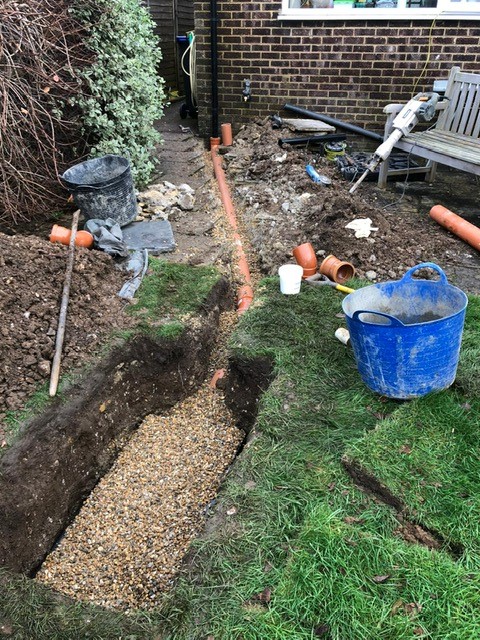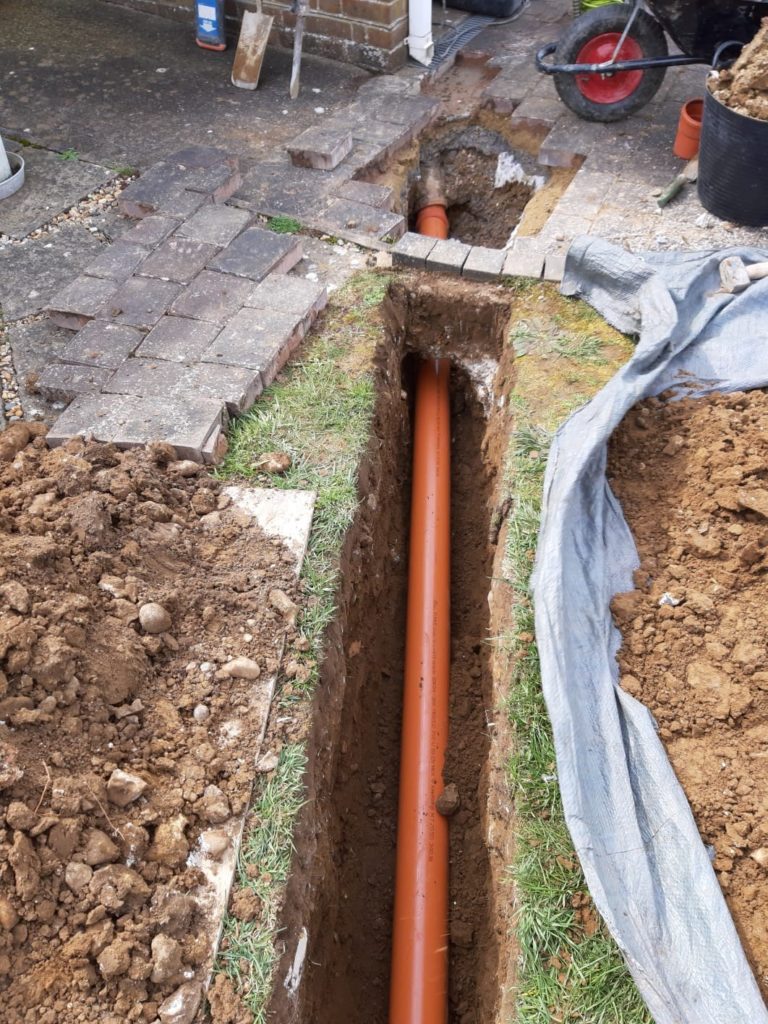Lead Pipes
Do You Have Lead Pipes in Your Home? Water mains in the UK are not…
Read more24 hr Emergency Callout

Blog

Rules and building regulations for a soakaway relating to foul drainage state that a soakaway is no longer an acceptable method of surface water and drainage waste disposal. Instead, a drainage field must be used for anything that is not rainwater. When using a soakaway for rainwater, it must be located over five meters from a building, and two and a half meters from a boundary. Soakaways must also not come into contact with the water table, as well as having sufficient storage capacity; allowing the water to absorb into the soil before overflowing.
Soakaways are a traditional surface water drainage system for buildings that are far away from a public sewer or watercourse, and are usually suitable for areas of less than 100 square meters. They are typically formed from square, or circular, pits filled with rubble or lined with dry jointed masonry or perforated concrete ring units. When dealing with a larger area, a soakaway generally uses a lined pit, trench type soakaways, or are constructed from specialist proprietary units.
Soakaway building regulations state that they must have capacity to store immediate run-off from roofs and other hard surfaces, leading to the water being able to disperse into the surrounding soil efficiently enough to be able to cope with the next large amount of water.
The sewage must:
Soakaway rules on checking for septic tank pollution:
You must check the area where you release sewage once a month for signs of pollution.
If you release sewage into the ground, check for:
If you release sewage into the water, check for:
Contact the Environment Agency incident line if you see signs of pollution. You should document your monthly checks.
In addition, You will need to apply for a permit if any of the following are relevant to your discharge.
For further information on these rules, please visit the UK Government approved document.
For general binding rules concerning this topic, visit the UK Government approved document.
A septic or rainwater soakaway is typically an undefined hole in the ground filled with rubble or rainwater crates, whereas a drainage field is a series of perforated pipes laid in trenches 300mm to 900mm wide, and backfilled with 20mm of gravel. The trenches used for drainage fields are usually a maximum of 700mm deep. This ensures aerobic digestion can take place, allowing effluent to be treated.

For a soakaway, liquid from surface run-off, rainwater, or septic tanks, would enter the backfilled hole and drain away. There are two main reasons why soakaways are no longer acceptable for foul drainage:
As of 01/01/2015, rules known as the General Binding Rules for small sewage discharges came into effect for all owners of off mains drainage solutions, which includes septic tanks, sewage treatment plants, and cesspits. These rules and regs allow for exceptions for old septic tanks but not for how long they discharge. These rules moved the legal responsibility for adherence firmly on the individual house owner – so if you have an off mains drainage system, you need to understand your responsibilities and the soakaway building regs. You also need to keep detailed records on what your system is, how it is maintained, and how it is serviced.
If you are installing a new foul soakaway or drainage field, then you should inform your local planning office. However, if you are installing a replacement soakaway; then you will generally not need planning permission. For all types of soakaway, building control guidelines are required to be followed. These are covered in the Building regulations 2010 section H Drainage and Waste Disposal, found here.